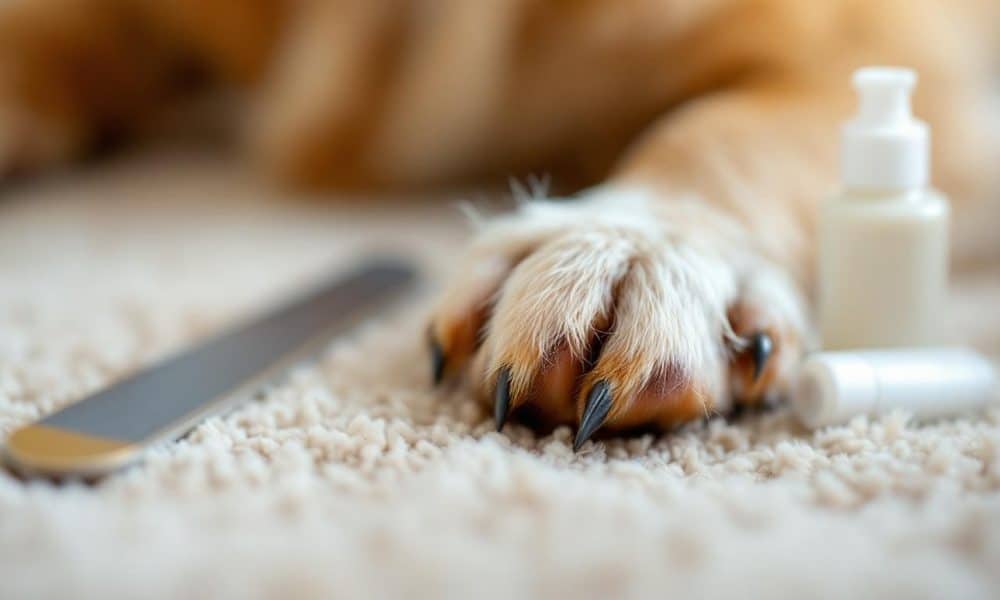
“This post contains affiliate links, and I will be compensated if you make a purchase after clicking on my links.”
At DogingtonPost, we understand the challenges of dealing with aggressive dogs. Many pet owners struggle to find effective ways to manage and train their aggressive canine companions.
In this post, we’ll share essential dog aggressive dogs training tips to help you address this behavior safely and effectively. From understanding the root causes to implementing proven techniques, we’ll guide you through the process of transforming your aggressive dog into a well-behaved pet.
Why Dogs Become Aggressive: Understanding the Root Causes
Fear-Based Aggression
Fear tops the list of aggression triggers in dogs. A study suggests that aggressive behavior is mainly related to early experiences, poor socialization processes, and other factors. Dogs may react aggressively when they feel threatened, cornered, or unable to escape a perceived danger.
Territorial and Possessive Aggression
Dogs naturally protect their space and belongings. This instinct can lead to territorial aggression, where a dog guards its home, yard, or favorite spot (even the couch). Possessive aggression occurs when a dog protects its food, toys, or other valued items. Both types pose potential dangers if left unaddressed.
Pain-Induced Aggression
Pain can transform even the gentlest dog into an aggressive one. A sudden change in your dog’s behavior, especially increased aggression, warrants a check for injuries or underlying health issues. A thorough veterinary examination will rule out medical causes of aggression.
Lack of Socialization
Dogs that are appropriately socialized as puppies are less likely to exhibit behavioral problems as adults, including aggression and fearfulness. These dogs often struggle to cope with new situations, people, or other animals.
Recognizing Aggressive Behavior
Early identification of aggression signs is key to effective intervention. Watch for these warning signs:
Aggression doesn’t always manifest in obvious ways. Subtle signs like avoiding eye contact, turning away, or excessive yawning can indicate discomfort that may escalate to aggression if ignored.
Understanding these underlying causes and recognizing aggression signs form the foundation for addressing the issue. Now, let’s explore effective training techniques to manage and reduce aggressive behavior in dogs.
Training Aggressive Dogs Effectively
The Power of Positive Reinforcement
Positive reinforcement stands as a cornerstone of effective dog training, especially for aggressive dogs. This method rewards desired behaviors to encourage their repetition. For aggressive dogs, it’s important to identify and reward calm, non-aggressive behaviors.
Start by teaching basic commands like “sit,” “stay,” and “leave it” in a calm environment. When your dog responds correctly, immediately reward with treats, praise, or playtime. This builds a positive association with following commands and helps establish you as a leader.

A study published in the Journal of Veterinary Behavior found that animal welfare science has traditionally focused on identifying negative welfare states, using physiological parameters, aggression, and boredom as indicators.
Desensitization and Counter-Conditioning
These techniques prove particularly effective for dogs with fear-based aggression. Desensitization involves gradual exposure of your dog to their triggers at a low intensity, slowly increasing over time. Counter-conditioning pairs this exposure with positive experiences.
For example, if your dog shows aggression towards strangers, start by having a person stand far away, just within sight. Reward your dog for calm behavior. Decrease the distance over multiple sessions, always keeping your dog below their reaction threshold.
The American Veterinary Society of Animal Behavior reports that these methods can significantly reduce fear and aggression in dogs when applied consistently and correctly.
Redirecting Aggressive Behavior
Redirecting serves as a valuable tool for managing aggressive outbursts. When you notice your dog becoming tense or showing early signs of aggression, quickly redirect their attention to a positive activity or command they know well.
Keep high-value treats or a favorite toy on hand for these moments. As soon as you spot potential aggression, call your dog’s name cheerfully and ask for a known command like “touch” (nose to hand). Reward generously when they comply.
Timing is key. Try to redirect before the aggressive behavior escalates for the best results. With consistent practice, your dog will learn to look to you for guidance in triggering situations instead of reacting aggressively.
Professional Guidance
Implementing these techniques requires dedication and often professional guidance. If you struggle with your dog’s aggression, consider seeking help from a certified dog behaviorist or trainer experienced in working with aggressive dogs. They can provide personalized strategies and ensure you apply these methods safely and effectively.
As we move forward, it’s essential to create a safe environment for both your dog and those around them during the training process. Let’s explore how to establish this crucial foundation for success in the next section.
Creating a Safe Space for Aggressive Dog Training
Muzzle Training: An Essential Safety Tool
Muzzles play a key role in managing aggressive dogs safely. Choose a basket muzzle that allows your dog to pant, drink, and take treats. Introduce the muzzle gradually. Place treats inside the muzzle and let your dog investigate it freely. Progress to brief fastenings of the muzzle, and reward your dog immediately after removal. Increase wearing time until your dog feels comfortable.
Muzzle training can reduce stress in dogs during veterinary visits (this principle applies to training sessions as well).
Effective Leash Management
A sturdy, non-retractable leash is essential for controlling an aggressive dog. The American Kennel Club recommends a 4 to 6-foot leash for optimal control. Practice loose-leash walking in a low-distraction environment before you tackle more challenging scenarios.
Consider using a head halter or front-clip harness for additional control. These tools redirect your dog’s attention back to you when they pull. Introduce these tools gradually and pair them with positive experiences to ensure your dog accepts them willingly.

Setting Up a Calm Training Zone
Designate a specific area in your home for training sessions. This space should be free from distractions and potential triggers. Remove items that might cause possessive behavior (such as food bowls or favorite toys).
Use visual barriers like baby gates or exercise pens to create a controlled environment for successful training. This allows you to control exposure levels during desensitization exercises.
Establishing a Pre-Training Routine
Create a consistent pre-training routine to signal to your dog that it’s time to focus. This might include a short walk, some calming exercises, or simply putting on their training gear. Consistency helps your dog understand expectations and reduces anxiety.
Gradual Introduction of Challenges
As your dog progresses, introduce controlled challenges to build their confidence and reinforce positive behaviors. Always prioritize safety and be prepared to adjust your approach based on your dog’s responses.
Final Thoughts
Training aggressive dogs demands patience, dedication, and a structured approach. We provided essential dog aggressive dogs training tips, from identifying triggers to implementing positive reinforcement techniques. Consistency proves vital when applying these strategies, and progress often takes time. A safe training environment, including proper use of muzzles and leashes, sets the stage for effective learning. Gradually introducing challenges builds your dog’s confidence and reinforces positive behaviors.
Some situations may require professional intervention. If you struggle to manage your dog’s aggression or if the behavior escalates, seek help from a certified dog behaviorist or trainer experienced with aggressive dogs. They will provide personalized strategies and ensure safe application of techniques.
We at DogingtonPost commit to helping you navigate dog ownership challenges. Our platform offers resources on dog care, training, and behavior management (including aggressive dog training). Applying these strategies consistently can help transform your aggressive dog into a well-behaved, confident companion.







